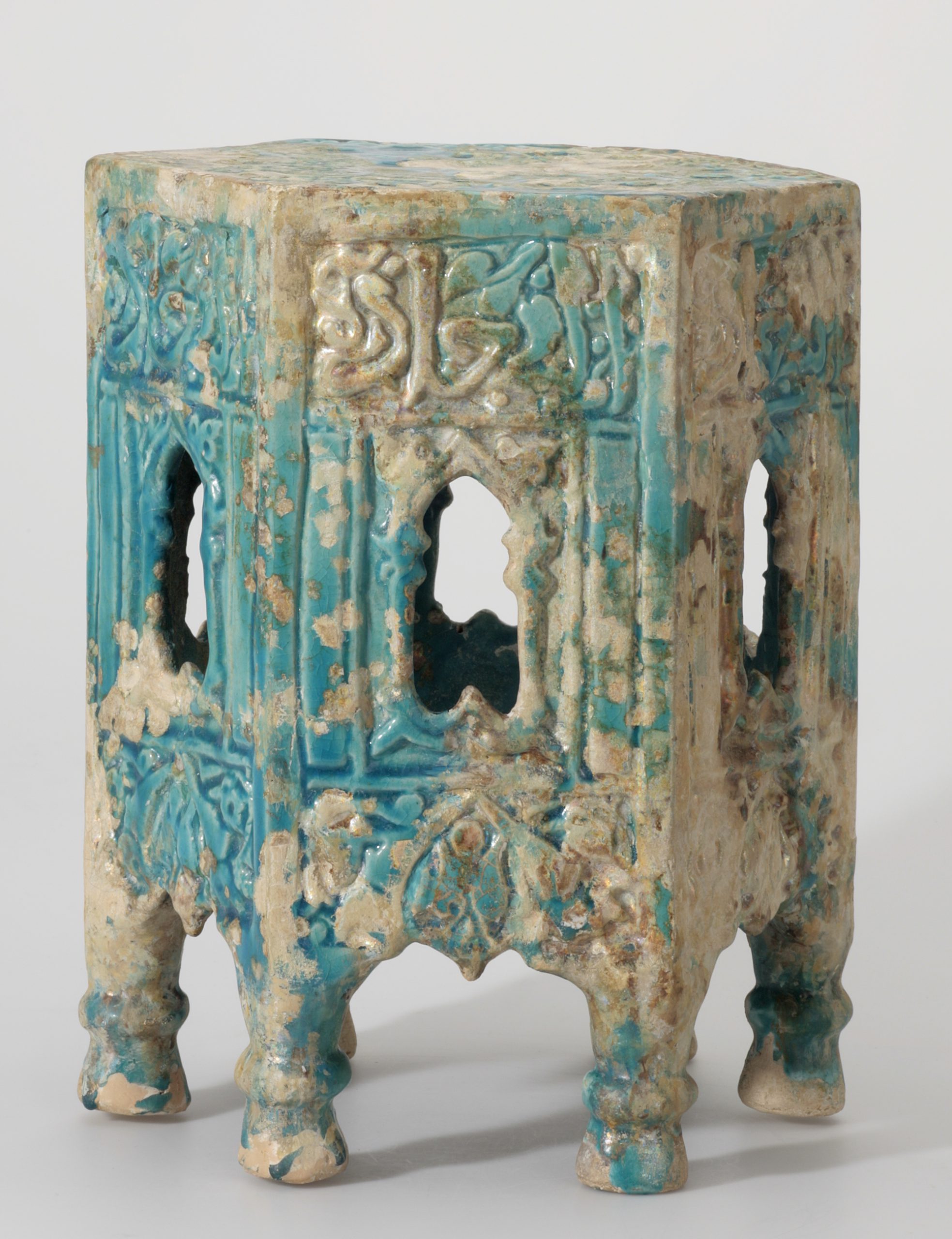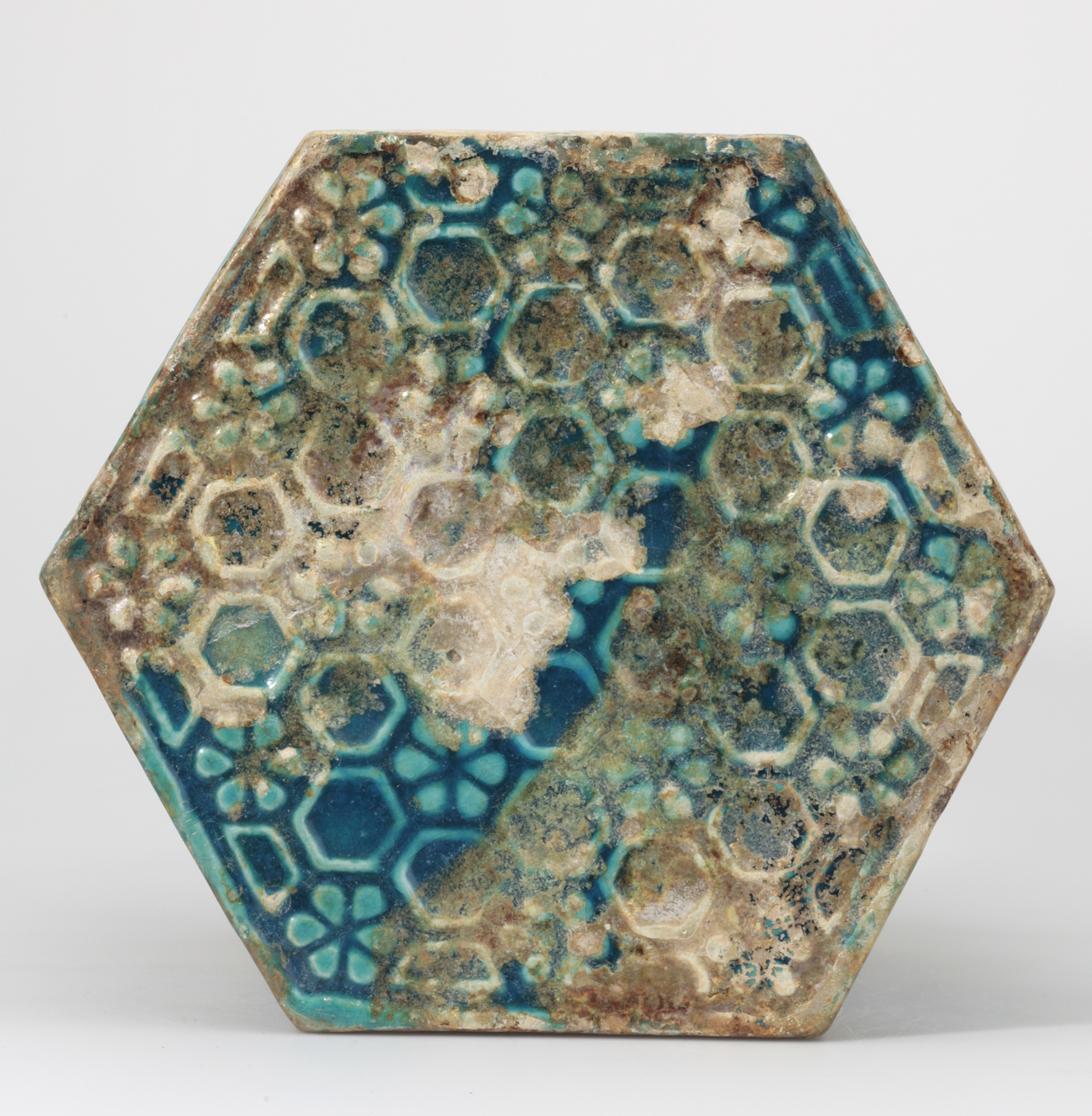 Print Page
Print Page
 Print Page
Print Page
Location: Syria
Materials: stonepaste ware with relief-moulded, carved and pierced decoration under a transparent turquoise glaze
Dimensions: 32.8 x 26.5 x 26.5cm
Accession Number: POT 1700
Other Notes:
A number of hexagonal pottery stands were produced in Syria during the Ayyubid period. They were presumably based on wooden models, as suggested by the shape of their feet. The majority are covered with a turquoise glaze, as in this example, but some are decorated with underglaze-painting and, less frequently, with lustre. They are related to triangular and rectangular stands of the period in terms of manufacturing technique and decorative patterns, but they lack the openings found on the latter [see POT 109], and may therefore have served another function; their shape and size suggests that they were most likely used as tables.
The decoration of the sides of this stand is fairly typical of the group, in that it combines architectural elements with calligraphic bands – here with one word, al-sa‘adah ‘(‘happiness’) on each side – and floral interlaces that are often seen in Raqqa lustre-wares. The decoration of the top, however, with its rows of hexagonal motifs alternating with 6-petalled rosettes, is more unusual.
Bibliography:
E.J. Grube et al, Cobalt and Lustre. The First Centuries of Islamic Pottery, The Nasser D Khalili Collection of Islamic Art, volume IX, London 1994, cat.327, pp.284–5.
J.M. Rogers, The Arts of Islam. Masterpieces from the Khalili Collection, London 2010, cat.143, p.122–3.

